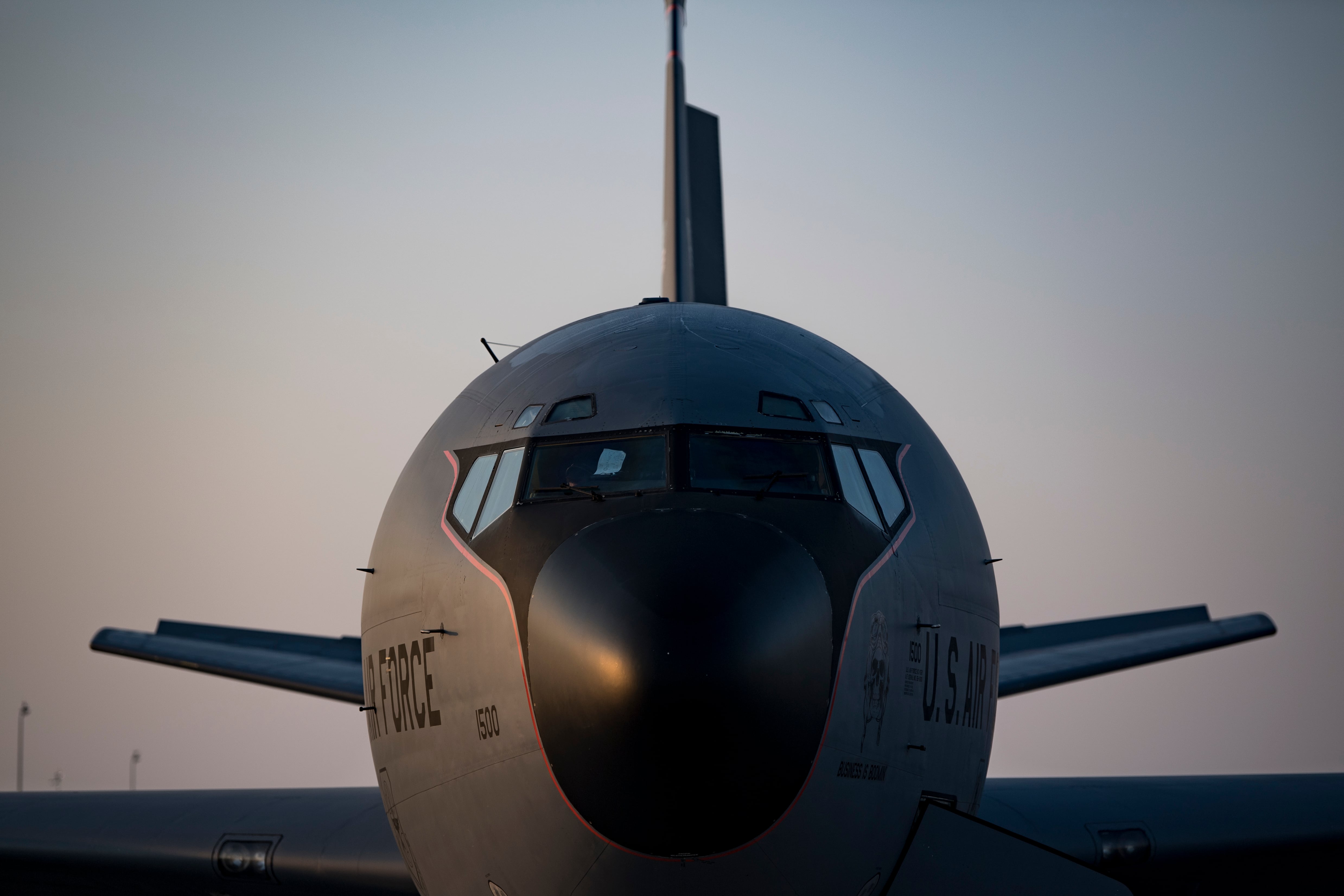WASHINGTON — Humble airlift planes like the C-130J Super Hercules and C-17 Globemaster III could become heavily-armed weapons trucks capable of airdropping large bundles of munitions that deliver a massive blast.
So far, the Air Force has conducted two successful tests of “palletized munitions” from the C-130 and C-17, said Maj. Gen. Clint Hinote, the deputy director of the service’s Air Force Warfighting Integration Capability cell.
“We are in discussions right now about how do we proceed to prototyping and fielding,” he said during a May 27 event held by the Mitchell Institute for Aerospace Studies.
Like the name suggests, palletized munitions are a collection of weapons strapped together onto a smart pallet, which would feed the munitions tracking and targeting information as they are dropped from an airlift platform. A request for information released in February characterized the technology as “a bomb bay in a box” that could allow mobility aircraft to stay out of a threat zone and launch a mass of standoff weapons.
RELATED

“It’s all about capacity,” Hinote explained. “You’ve got to create enough capacity so that a long-range punch is really a punch. What we see is that no matter how big our bomber force is, the capacity that the joint force needs is always more and more. And so this is why we think that there is a real possibility here for using cargo platforms to be able to increase the capacity of fires.”
Air Force Special Operations Command conducted one demonstration of the technology on Jan. 28, when a MC-130J performed three airdrops of simulated palletized munitions at at Dugway Proving Ground, Utah.
“In this case, munitions stacked upon wooden pallets, or Combat Expendable Platforms (CEPs), deployed via a roller system,” the Air Force Research Laboratory said in a May 27 release. “AFSOC aircrew released five CEPs rigged with six simulated munitions, the same mass as the actual weapons, including four Cargo Launch Expendable Air Vehicles with Extended Range (CLEAVERs) across a spectrum of low and high altitude airdrops."
In response to questions from Defense News, AFRL clarified that simulated long-range cruise missiles were deployed from an off-the-shelf pallet system as well as an Air Force designed crate system. CLEAVER is a new weapon under development by the lab as part of a separate effort, though it may be used in palletized munitions in the future.
On Feb. 27, Air Mobility Command conducted a similar demonstration with a C-17, which conducted two airdrops of simulated palletized munitions, AFRL said.
In future demonstrations, AFSOC plans to release more advanced forms of simulated munitions as well as full-up weapons vehicles that can be configured with a warhead and terminal guidance system.
However, the Air Force is looking for other technological options. Through its request for information, which closed in April, the service sought data about new or existing palletized munitions concepts. The service hopes to use that information to inform future experimentation efforts, operational assessments or the acquisition palletized munitions systems.
Five companies responded to the RFI, AFRL said.
If the effort moves forward, one big question will be figuring out which entities in the Air Force have command over a mobility asset that is playing a combat role more similar to a fighter jet or bomber.
“Some kind of extremely streamlined command and control is going to be necessary, or else you must have an integrator somewhere,” said Hinote, who added that cultural barriers inside the Air Force could be harder to overcome than the technological challenges of creating palletized munitions.
Hinote also acknowledged that it currently may be hard to find the funding to move forward with a new program.
“We’re in the last year of an administration. We’ve had to turn in the budget early with not too many changes, and we’re looking at the possibility of a continuing resolution where new starts are going to be difficult to do,” he said.
However, “that is all temporary,” he said.
Updated 5/28/20 to add more information from AFRL about past palletized munitions experiments.
Valerie Insinna is Defense News' air warfare reporter. She previously worked the Navy/congressional beats for Defense Daily, which followed almost three years as a staff writer for National Defense Magazine. Prior to that, she worked as an editorial assistant for the Tokyo Shimbun’s Washington bureau.








